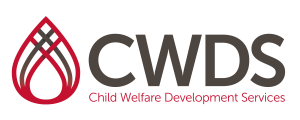CWDS Curriculum
The Role of Foster Parents in Reunification
Level: Advanced Practice-Lineworker
Credits: 6
Intended Audience: New and current child welfare personnel who want to develop techniques for encouraging birth parents and foster parents to work together towards the goal of reunification
Intended Objectives:
- To examine the role of foster parents as members of the team working toward reunification
- To intimately explore team dynamics by confronting perceptual differences and problems within the team
- To examine various motivations for foster parenting and how these will effect participation in reunification objectives
- To review the complex issues involved with “concurrent planning.”
- To identify the various family dynamics of families involved in the child welfare system, and how they influence both the success of reunification and the approach used by foster parents
- To use a ”Force-field Analysis” to predict outcome and influence case plans
- To analyze the change process and how social workers, foster parents, and birth parents or guardians can work together during the difficult process
- To present strategies for team cooperation in assisting children to make necessary emotional and behavior changes to achieve success in reunification
Topics Include:
- Building a “team” between those involved with a child and family, and fostering inclusion between all team members
- Facilitating communication-how to encourage sharing of information about the child
Using foster parents to model good parenting skills - Encouraging peer support
- Using strategies for setting up mutually beneficial visitations
CalSWEC Competencies Addressed:
1.3 Student is able to maintain collaborative relationships with individuals, groups, community based organizations and government agencies to advocate for equity and availability of culturally sensitive resources and services.
2.11 Student understands the effects of attachment, separation, and placement experiences for the child and the child’s family and the effects on the child’s physical, cognitive, social and emotional development.
2.13 Student understands the principles of concurrent and permanency planning.
2.14 Student understands the importance of working collaboratively with biological families, foster families, and kin networks, and understands the need to involve them in assessment and planning and supporting them in coping with special stresses and difficulties.
Posted In:Permanency: Reunification, Foster Care and Adoptions



